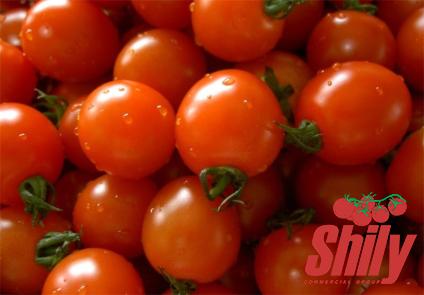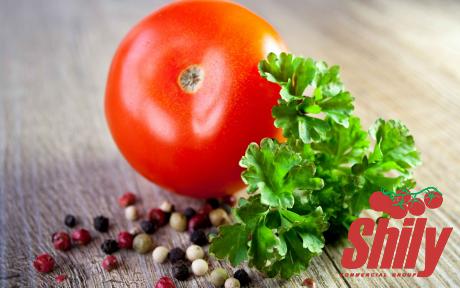Tomato paste is a versatile ingredient that serves as a cornerstone in many recipes, from pasta sauces to soups and stews. However, despite its widespread popularity, some people find that tomato paste can have a bitter taste. In this comprehensive guide, we will explore the reasons behind why tomato paste might taste bitter, how to identify bitterness in tomato paste, and what you can do to mitigate it in your culinary creations. Why Does Tomato Paste Taste Bitter? 1. Varietal and Ripeness: The variety of tomatoes used to make the paste can significantly impact its taste. Some tomato varieties naturally have a more pronounced bitterness than others. Additionally, the ripeness of the tomatoes at the time of processing can also influence the bitter flavor in the resulting paste.

.
 Overripe tomatoes tend to have higher levels of bitterness due to increased sugar content converting to bitter compounds. 2. Processing Methods: The method of processing tomatoes into paste can also play a role in the bitterness of the final product. Prolonged cooking times or high-temperature processing can lead to the formation of bitter compounds in the paste. Improper handling during processing, such as using unclean equipment or storing tomatoes for an extended period before processing, can also contribute to bitterness. 3. Additives and Preservatives: Some commercially produced tomato pastes may contain additives or preservatives that can impart a bitter taste. These can include citric acid, which is sometimes added to enhance shelf life, as well as artificial flavors or colors. It is essential to read the ingredients list on the tomato paste packaging to identify any additives that could be causing bitterness. 4. Storage Conditions: Improper storage of tomato paste can also lead to bitterness. Exposure to light, heat, or air can cause the paste to deteriorate, resulting in off-flavors, including bitterness. It is crucial to store tomato paste in a cool, dark place, preferably in an airtight container, to maintain its freshness and flavor. Identifying Bitterness in Tomato Paste: 1. Taste Test: The most straightforward way to determine if tomato paste tastes bitter is through a taste test. Simply taste a small amount of the paste on its own or mixed with a little water. If you detect a strong bitter flavor that overpowers the natural sweetness of the tomatoes, the paste may indeed be bitter.
Overripe tomatoes tend to have higher levels of bitterness due to increased sugar content converting to bitter compounds. 2. Processing Methods: The method of processing tomatoes into paste can also play a role in the bitterness of the final product. Prolonged cooking times or high-temperature processing can lead to the formation of bitter compounds in the paste. Improper handling during processing, such as using unclean equipment or storing tomatoes for an extended period before processing, can also contribute to bitterness. 3. Additives and Preservatives: Some commercially produced tomato pastes may contain additives or preservatives that can impart a bitter taste. These can include citric acid, which is sometimes added to enhance shelf life, as well as artificial flavors or colors. It is essential to read the ingredients list on the tomato paste packaging to identify any additives that could be causing bitterness. 4. Storage Conditions: Improper storage of tomato paste can also lead to bitterness. Exposure to light, heat, or air can cause the paste to deteriorate, resulting in off-flavors, including bitterness. It is crucial to store tomato paste in a cool, dark place, preferably in an airtight container, to maintain its freshness and flavor. Identifying Bitterness in Tomato Paste: 1. Taste Test: The most straightforward way to determine if tomato paste tastes bitter is through a taste test. Simply taste a small amount of the paste on its own or mixed with a little water. If you detect a strong bitter flavor that overpowers the natural sweetness of the tomatoes, the paste may indeed be bitter.
..
 2. Aroma: In addition to taste, the aroma of tomato paste can also provide clues about its quality. Bitterness in tomato paste may be accompanied by off-putting or sour odors. A fresh, high-quality tomato paste should have a rich, sweet aroma that is characteristic of ripe tomatoes. 3. Visual Inspection: Visually inspecting the tomato paste can also help in determining its quality. Bitter tomato paste may have a darker color or appear dull and unappetizing. Look for any signs of mold, discoloration, or separation, as these can indicate spoilage that might contribute to bitterness. How to Reduce Bitterness in Tomato Paste: 1. Sweetening Agents: If you find that your tomato paste is overly bitter, you can balance out the flavors by adding a sweetening agent. Sugar, honey, or maple syrup can help counteract the bitterness and enhance the natural sweetness of the tomatoes. Start with small amounts and adjust to taste.
2. Aroma: In addition to taste, the aroma of tomato paste can also provide clues about its quality. Bitterness in tomato paste may be accompanied by off-putting or sour odors. A fresh, high-quality tomato paste should have a rich, sweet aroma that is characteristic of ripe tomatoes. 3. Visual Inspection: Visually inspecting the tomato paste can also help in determining its quality. Bitter tomato paste may have a darker color or appear dull and unappetizing. Look for any signs of mold, discoloration, or separation, as these can indicate spoilage that might contribute to bitterness. How to Reduce Bitterness in Tomato Paste: 1. Sweetening Agents: If you find that your tomato paste is overly bitter, you can balance out the flavors by adding a sweetening agent. Sugar, honey, or maple syrup can help counteract the bitterness and enhance the natural sweetness of the tomatoes. Start with small amounts and adjust to taste.
…
 2. Acidic Ingredients: Acidic ingredients like lemon juice or vinegar can also help mask bitterness in tomato paste. The acidity can offset the bitter notes and brighten the overall flavor profile. Add a splash of lemon juice or a teaspoon of vinegar to your recipe and taste as you go to achieve the desired balance. 3. Cooking Techniques: Adjusting your cooking techniques can also help mitigate bitterness in tomato paste. Slow cooking the paste over low heat can allow flavors to mellow and develop without intensifying the bitterness. Stirring frequently and adding liquid as needed can prevent the paste from burning or becoming too concentrated. 4. Quality Ingredients: Using high-quality, fresh tomatoes to make homemade tomato paste can help ensure a delicious, sweet flavor without the bitterness often found in commercial products. Choose ripe, in-season tomatoes and follow a simple homemade tomato paste recipe to control the ingredients and cooking process.
2. Acidic Ingredients: Acidic ingredients like lemon juice or vinegar can also help mask bitterness in tomato paste. The acidity can offset the bitter notes and brighten the overall flavor profile. Add a splash of lemon juice or a teaspoon of vinegar to your recipe and taste as you go to achieve the desired balance. 3. Cooking Techniques: Adjusting your cooking techniques can also help mitigate bitterness in tomato paste. Slow cooking the paste over low heat can allow flavors to mellow and develop without intensifying the bitterness. Stirring frequently and adding liquid as needed can prevent the paste from burning or becoming too concentrated. 4. Quality Ingredients: Using high-quality, fresh tomatoes to make homemade tomato paste can help ensure a delicious, sweet flavor without the bitterness often found in commercial products. Choose ripe, in-season tomatoes and follow a simple homemade tomato paste recipe to control the ingredients and cooking process.










Your comment submitted.